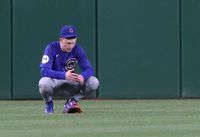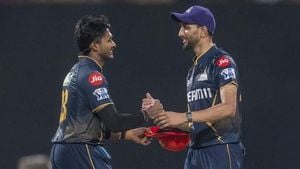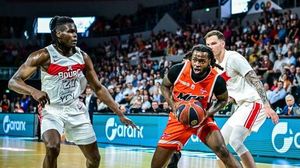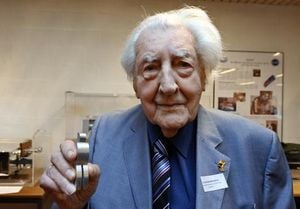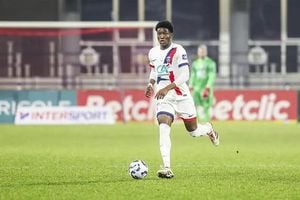As of May 3, 2025, the trade of Javier Báez and Trevor Williams from the Chicago Cubs to the New York Mets for outfield prospect Pete Crow-Armstrong is shaping up to be one of the best moves of the 2021 Major League Baseball Trade Deadline. This pivotal trade was part of a broader strategy by the Cubs, who also dealt away key players like Kris Bryant and Anthony Rizzo during that season.
The Cubs' decision to trade Bryant to the San Francisco Giants netted them Caleb Kilian and Alexander Canario. While Kilian has returned to the Cubs after being designated for assignment earlier this season, Canario is currently playing for the Pittsburgh Pirates. Meanwhile, Kevin Alcantara, the remaining piece from the Rizzo trade, is expected to make his most significant contributions in another team's uniform.
In his second full season at the Major League level, Crow-Armstrong is already knocking on the door of being a 4-WAR player, and if his offensive breakout proves sustainable, he is poised to reach the coveted 5-WAR status. Should Crow-Armstrong continue on this trajectory, the Báez trade could be regarded as one of the most lopsided trades in MLB history.
However, the Cubs were fortunate to acquire Crow-Armstrong, as they initially sought to land Mets pitching prospect Matt Allan in exchange for Báez. The Cubs had also explored discussions regarding third base prospect Mark Vientos, but it was Allan they coveted the most. According to Ken Rosenthal of The Athletic, the Cubs were adamant about receiving Allan before settling for Crow-Armstrong.
In hindsight, the Cubs dodged a significant bullet by not acquiring Allan. Drafted by the Mets in 2019, Allan quickly emerged as one of their top pitching prospects. Unfortunately for him, he was recovering from Tommy John surgery during the trade discussions and would not pitch again for six years. Allan, now 24, has returned to action, boasting a 2.25 ERA through his first five starts with the Mets' Class-A affiliate this season. While there is still time for Allan to fulfill his potential as a Major League pitcher, the Cubs are grateful for their current situation with Crow-Armstrong.
The narrative surrounding Crow-Armstrong is a testament to resilience and the unpredictable nature of baseball trades. Selected 19th overall by the Mets in 2020, Crow-Armstrong faced early career challenges, including injuries that limited him to just 24 at-bats with a Single-A affiliate. His trade to the Cubs in mid-2021 for the veteran Báez has since sparked discussions about the long-term implications of such decisions.
Now at 23 years old, Crow-Armstrong has risen to prominence, showcasing the talent that once made him a highly touted prospect. His transformation into a breakout star has breathed new life into the narrative surrounding the trade, prompting fans and analysts alike to ponder what might have transpired had the Cubs secured Allan instead.
Jed Hoyer, the Cubs' president of baseball operations, reflected on the trade, stating, "We were really fortunate. If he’s playing, we’re never getting him. His defensive numbers would have been great, and they probably would have said no." This sentiment underscores the strategic nature of trades in professional sports, where timing and opportunity can dramatically alter a team's trajectory.
Despite the uncertainty surrounding Crow-Armstrong's early career, he has proven to be a valuable asset for the Cubs. Recently named the Cubs Player of the Month for April 2025, Crow-Armstrong's performance has solidified his place in the lineup and raised expectations for his future contributions.
In contrast, the Cubs' desire for Allan, who had recently undergone Tommy John surgery, could have resulted in a disastrous outcome had they been successful in acquiring him. With Allan's recent history of injuries, including a revision surgery in 2023, the Cubs would have received little value from a player who has only just begun to pitch again.
The Cubs' trade strategy in 2021 was part of a larger effort to reshape their roster and move away from contracts that had become burdensome. In addition to trading Báez, Rizzo, and Bryant, they also dealt away Craig Kimbrel, Joc Pederson, and Andrew Chafin. While the returns on some of these trades are still being evaluated, the acquisition of Crow-Armstrong stands out as a significant win for the organization.
The trade has led to renewed discussions about the Cubs' future and the potential impact of their young star on the team's success. As he continues to develop, fans are eager to see how Crow-Armstrong's journey will unfold in the coming seasons.
In a sport where every decision carries weight, the Cubs' choice to trade for Crow-Armstrong instead of Allan has proven to be a pivotal moment in their recent history. The trade serves as a reminder of the importance of making informed decisions and the potential ripple effects that can arise from a single transaction.
As the Cubs look ahead, the narrative surrounding Crow-Armstrong and his trajectory will undoubtedly remain a focal point. The combination of his talent, work ethic, and the lessons learned from past trades will shape the future of the franchise.
With each game, Crow-Armstrong cements his status as a player to watch, and the Cubs' decision to acquire him may well be viewed as a turning point in their quest for success in Major League Baseball.
